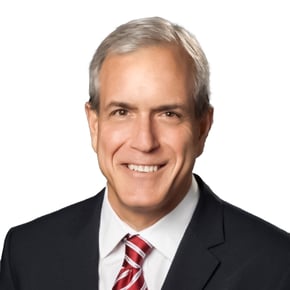You’ve just been offered your career “dream job” as CHRO. This is your once-in-a-lifetime opportunity to lead change, rather than be consumed by it. But it’s 2020. Instead of riding a bullet express train, you’ll be on a rollercoaster. The business environment is even more chaotic than during the fiscal crisis of 2008. Profits slide down suddenly, slowly climb back up, only to slide down even faster and eventually rise again. You have about six months to make an impact and be the “solution” before you become part of the “problem”. Where should you focus your time, attention and energy?
When the global financial crisis hit, I was stepping into the CHRO role at A.P. Møller-Maersk Group. The previous CEO had retired earlier than planned and, as often happens, my predecessor left the company. There were no clear expectations for the business units, no roles and responsibilities articulated for the corporate functions. Talent was disconnected from value everywhere I looked. And the credibility of the HR function in the organization was at an all-time low.
In navigating those circumstances (and others even more challenging since), I have learned that it is not only prudent to be business-focused and outcome-driven. It is also wise to understand what you have on your hands first.
Conceptually, this sounds easy. In practice, it’s very difficult.
Seek to Understand
What you are told during the search process is often not representative of what the organization really wants. You must do your own research to figure out as much as possible before you accept the CHRO role. (Once you are on board, it’s too late to backtrack, unless, of course, you discover evidence of corporate malfeasance.) Gather information in the following three areas before making any decisions.
1. THE BUSINESS
Exactly how does the company create value today—and how will it create value tomorrow? At CEO.works, we refer to this as the “value agenda”.
If you don’t understand the value agenda, you won’t advance past “go”, no matter what else you do. That is because all the critical work, all the Jobs To Be Done™, all the critical roles in the company should be derived from the value agenda. Misunderstand the value agenda and you’ll get this work, these Jobs and your critical roles wrong. Then it won’t matter what caliber of talent gets assigned to these roles. You’ll be setting them—and the company—up to fail. Their talents will be applied to work that isn’t connected to what the company actually needs done to deliver value today and tomorrow.
2. YOUR C-SUITE PARTNERS
What do your colleagues in the C suite want to start or stop? What do they want to continue doing or change?
You’ll get answers to these questions by having one candid conversation with your CEO and CFO at the very beginning of your tenure. This is your opportunity to elicit from them what they like and don’t like, what they want more or less of. It is, essentially, the foundational conversation for building powerful, cohesive partnerships in the C suite.
You only have one shot at this dialogue. Listen actively, read between the lines, and ask clarifying questions.
In this conversation, it is always risky to take things at face value. Parse out the dynamics of organizational politics and culture from the real issues. You want to understand not only what is needed, but also what is going on in the background. For example, it became obvious to me in my initial C-suite conversation at Maersk that the HR team needed to start trusting leaders to make good decisions and stop making the decisions for them. Distributed decision making would put the organization in a better position to create and capture value faster.
3. YOUR TEAM
Are your people capable of delivering what needs to be delivered? Who and where are your high performers—and who and where are your less effective performers?
If the company’s value agenda has shifted (and these days it is very likely to have), then critical roles will probably have shifted as well. The capabilities of your high performers may no longer be well matched to the set of Jobs To Be Done associated with the roles they occupy. Even if the value agenda hasn’t shifted, some individuals may simply fall short of your leadership requirements or the demands of your current business context. You’ll want to make sure early on that your high performers are precisely matched with challenging and important work they are uniquely prepared to do.
So get the low down on what to do differently. Read between the lines. Be deliberate and decisive about the changes to make. Precisely match your high performers with the company’s most critical work. Build relationships and trust with your C-suite colleagues, team and board. In mastering these and getting off to a fast start, you’ll not increase your odds of making the contribution you want to make while in your new CHRO role. You may find this to the most fulfilling experience of your career.

